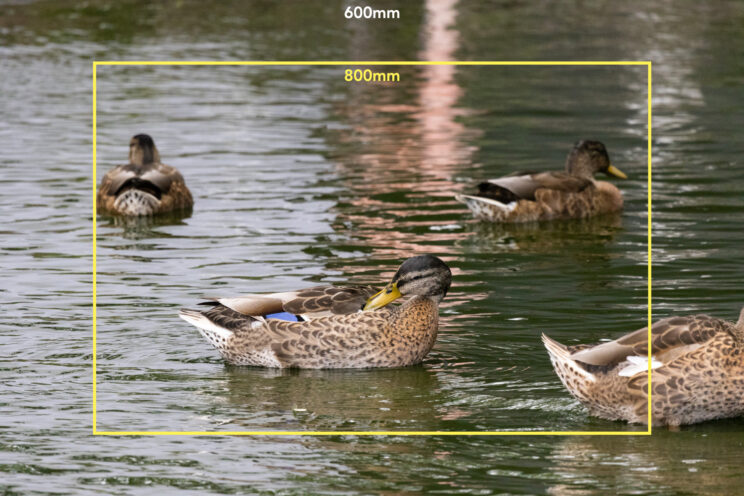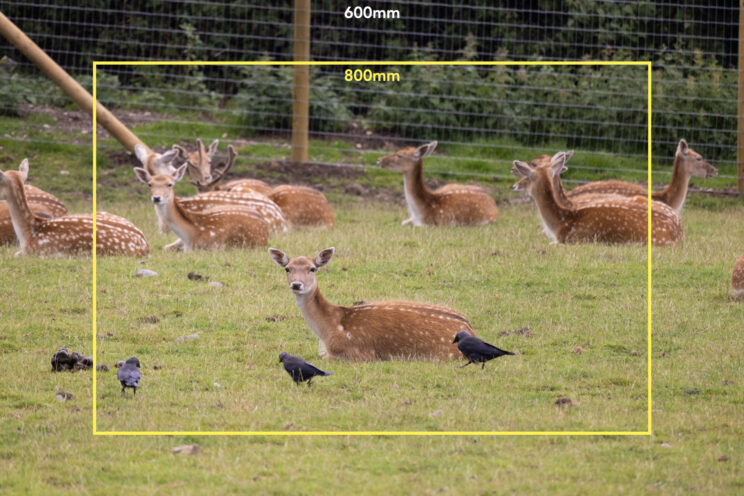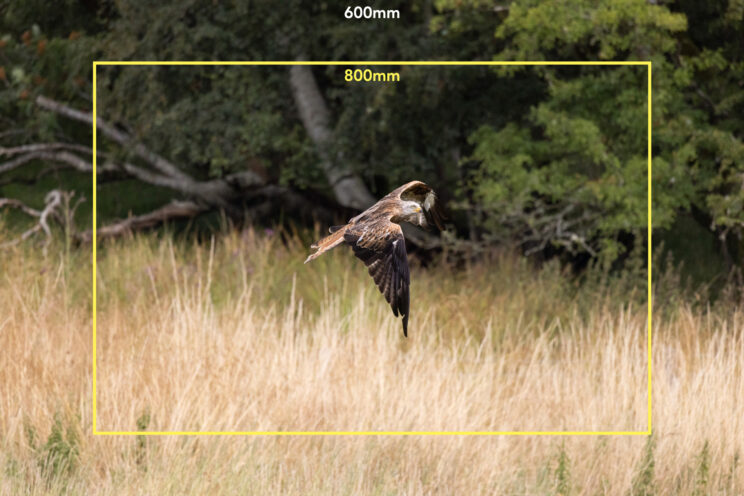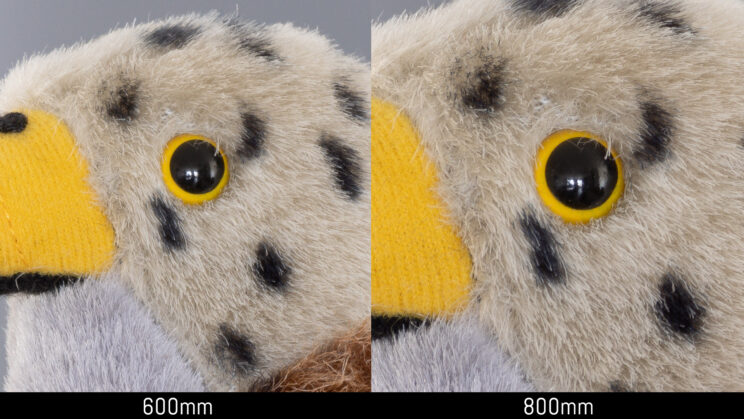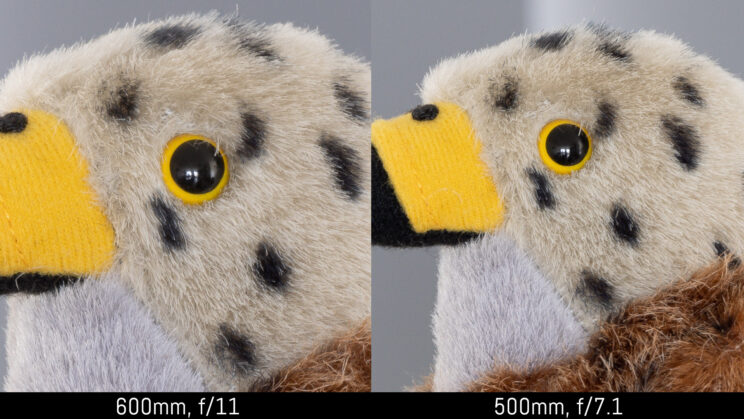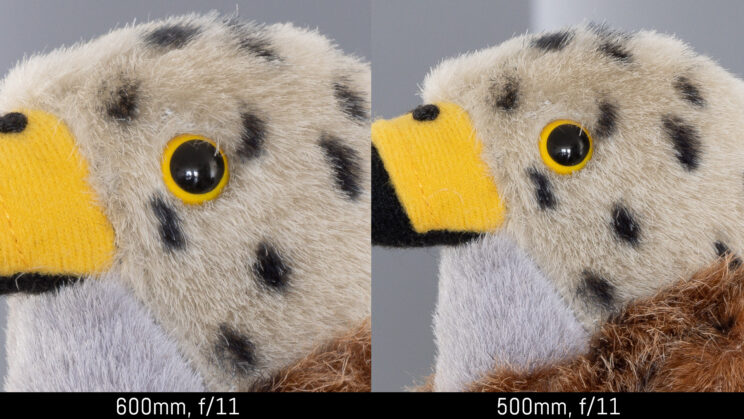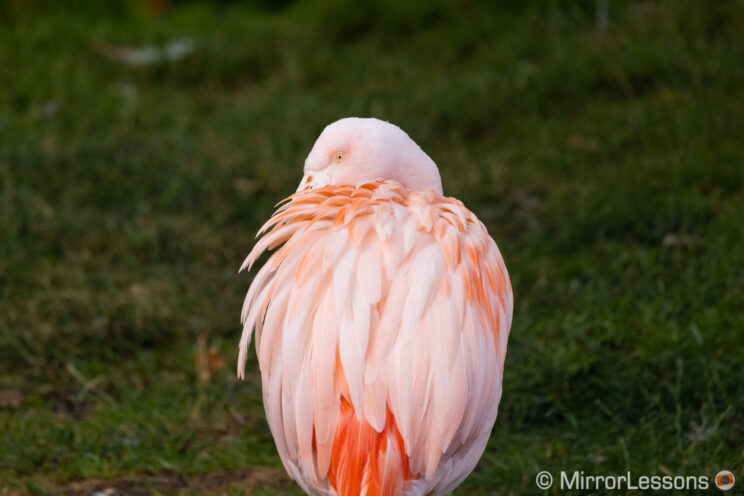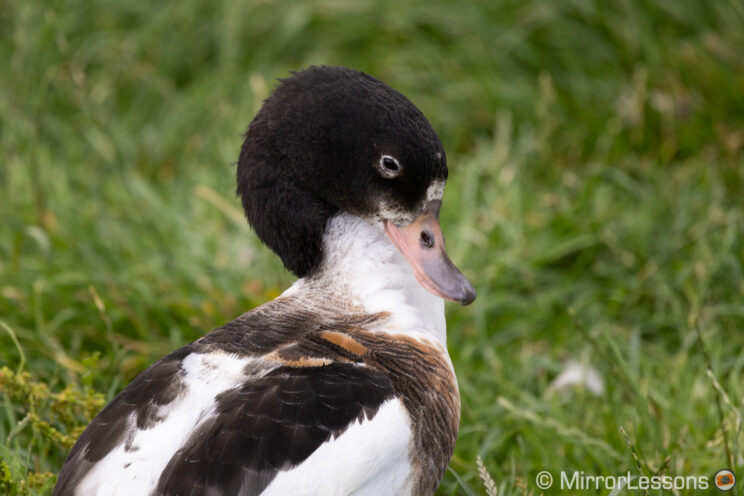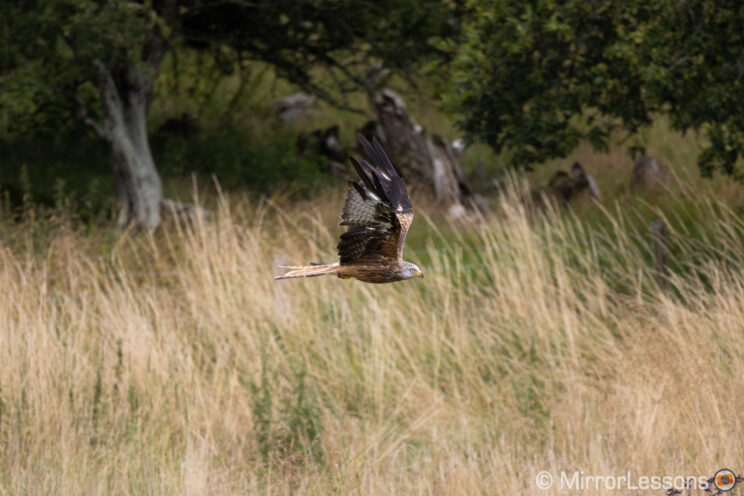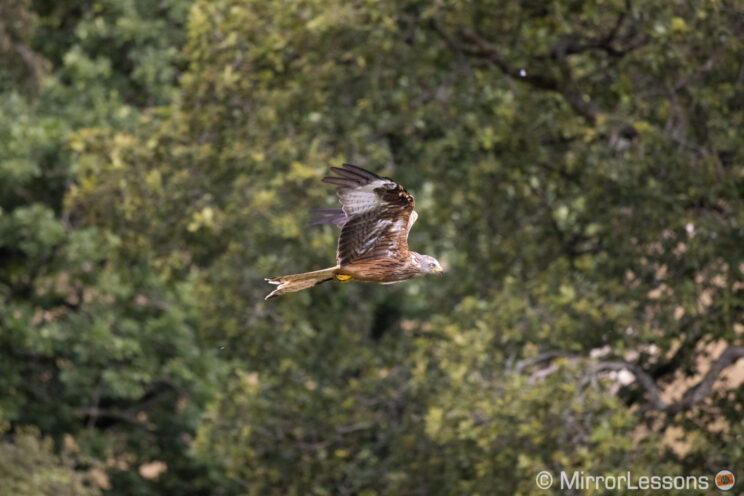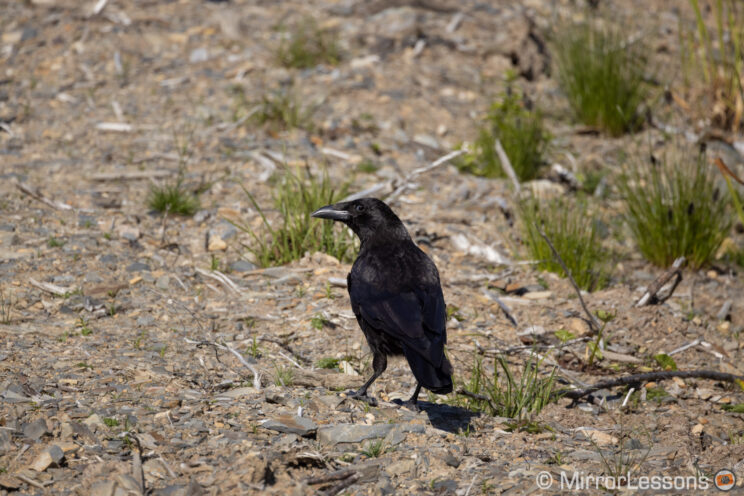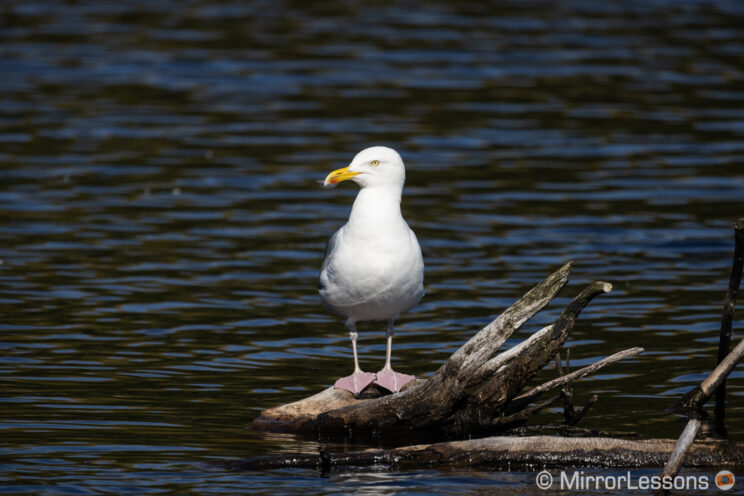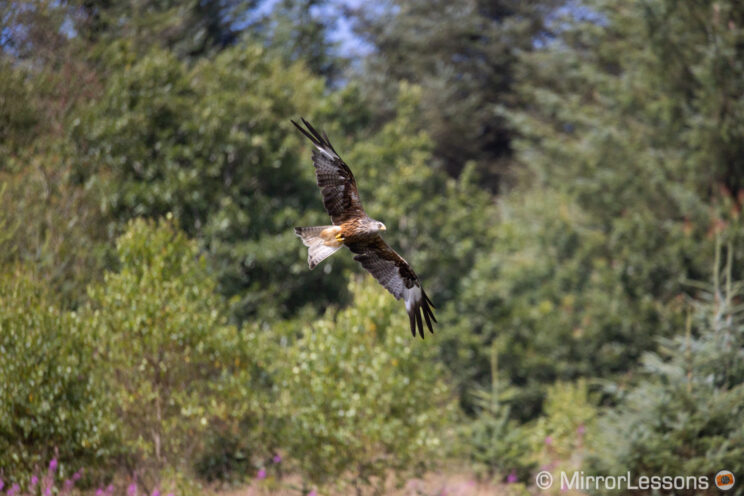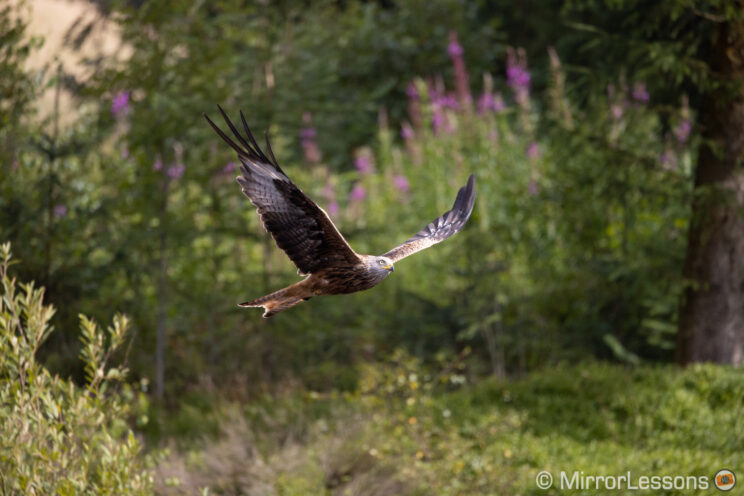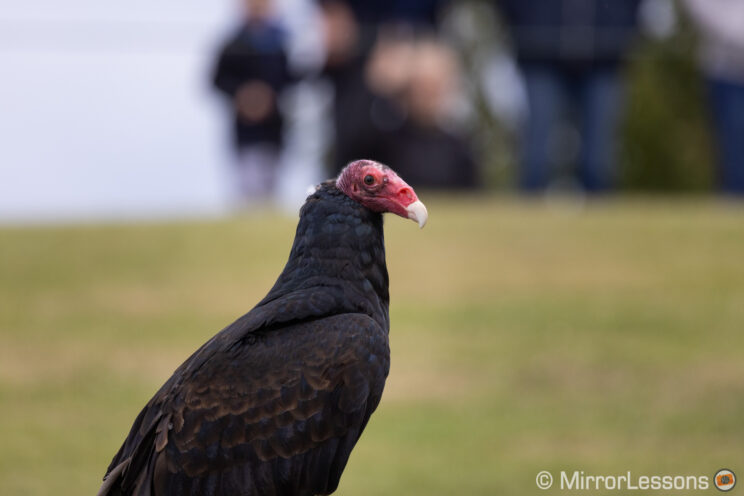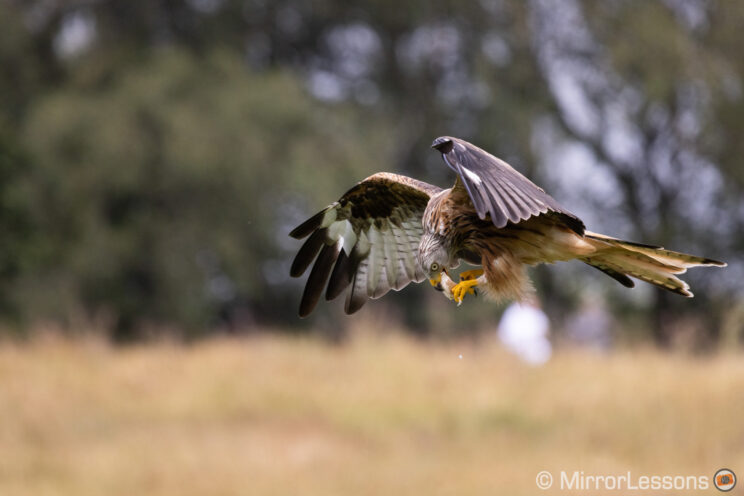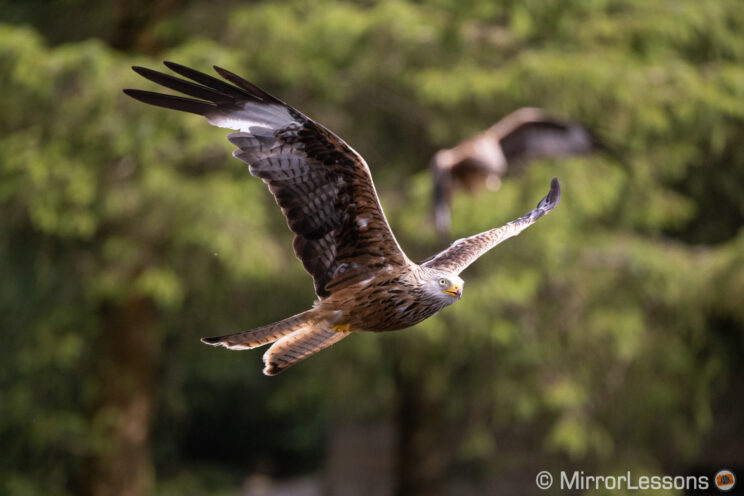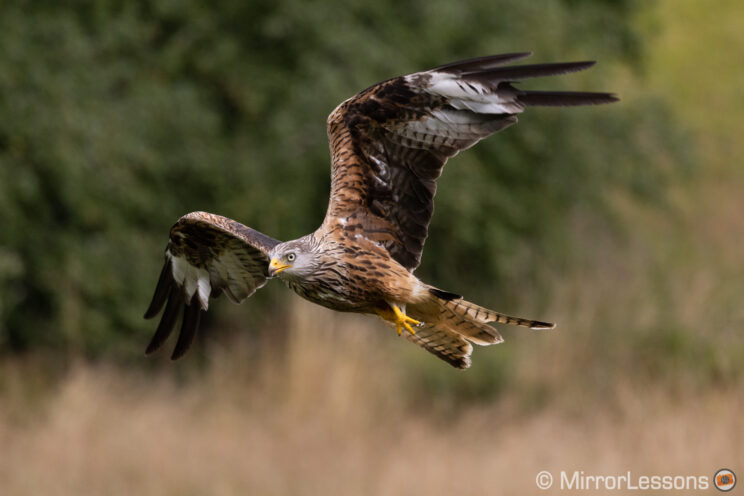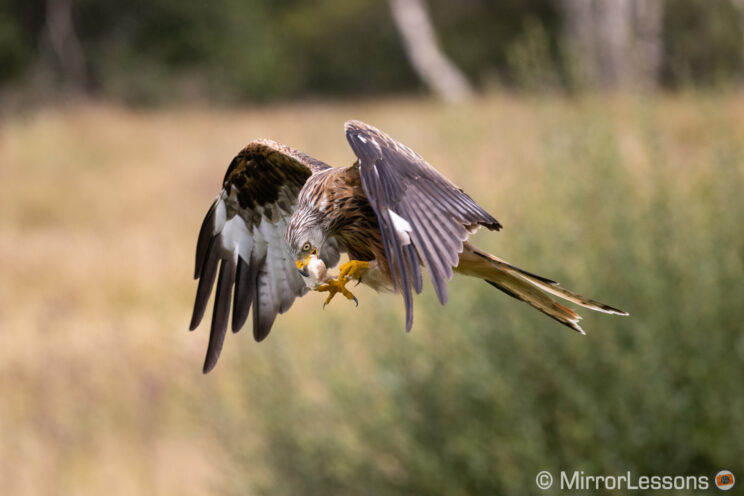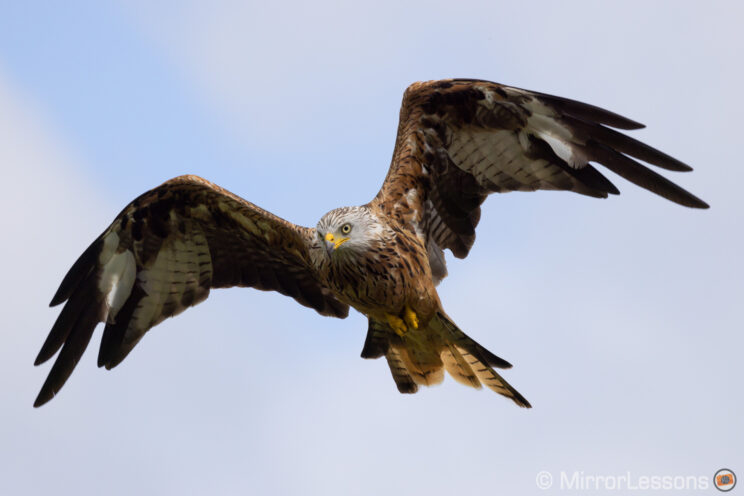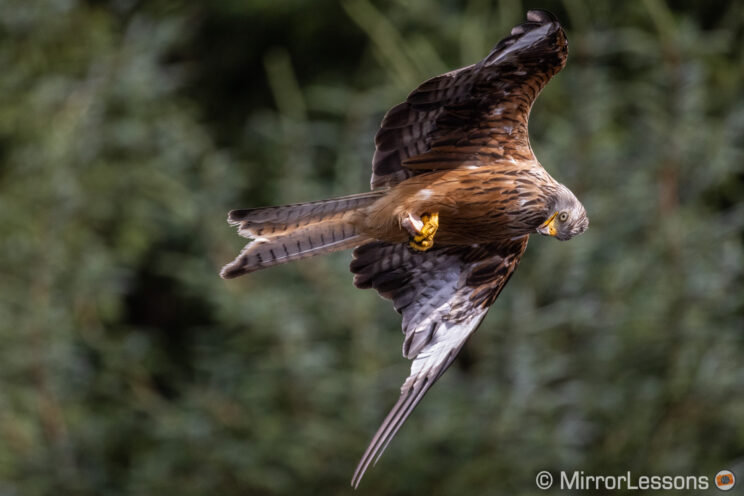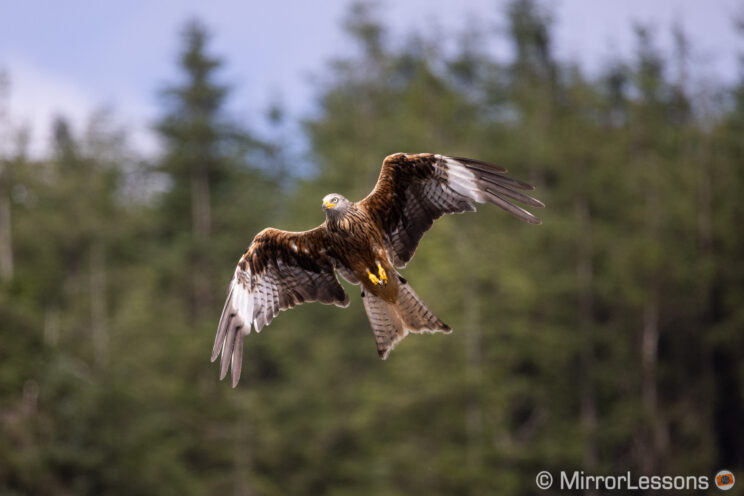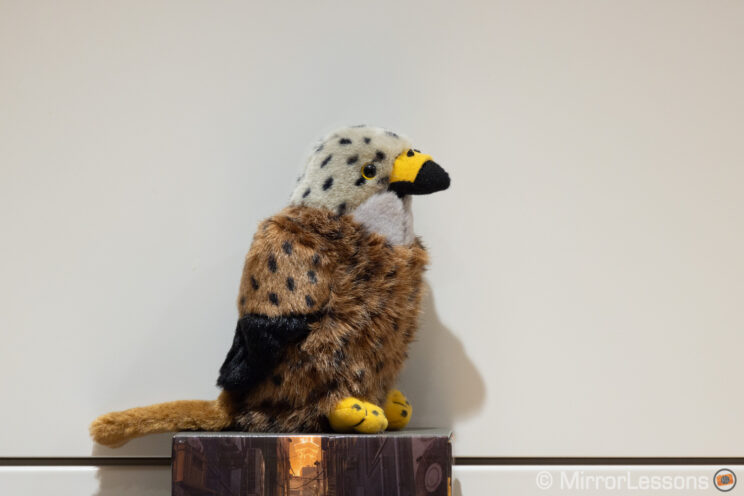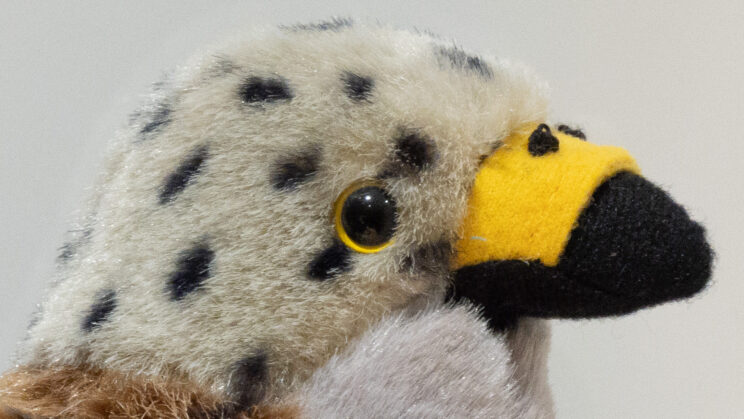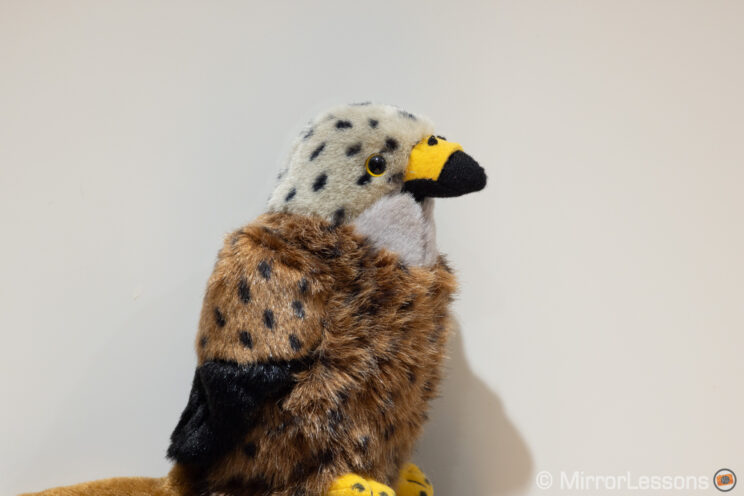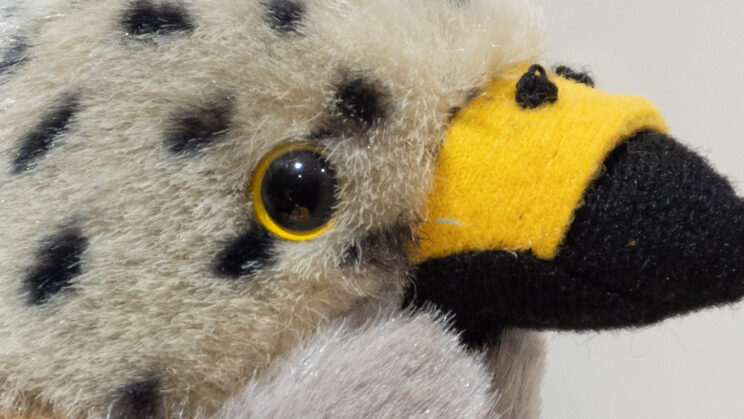Canon surprised everybody when they announced the RF 600mm F11 and RF 800mm F11. Traditionally, super-telephoto prime lenses are those big, heavy “beasts” you see at the Olympics or soccer games. They have a faster aperture and are among the most expensive lenses you can buy.
With the 600mm and 800mmm F11, Canon has released two compact, lightweight and very affordable alternatives for beginner and amateur photographers.
Obviously, there are compromises such as the small f/11 aperture and the lack of weather sealing. But the question remains: how good are they?
In this article, I explore the pros and cons and, hopefully, help you come to a decision if you’re hesitating between these two focal lengths.
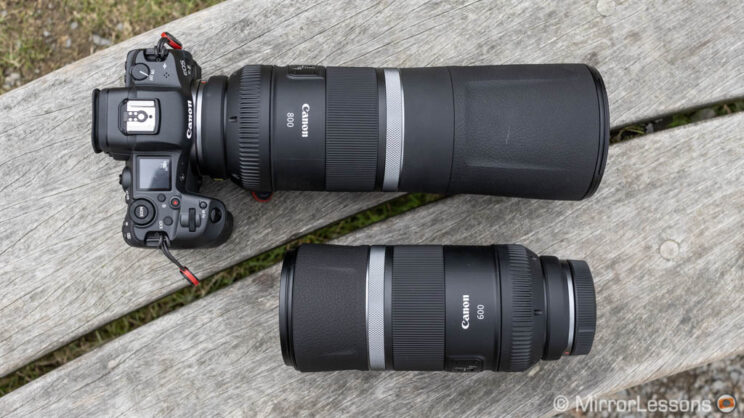
Ethics statement: we rented the Canon lenses to produce this article. We were not asked to write anything about these products, nor were we provided with any sort of compensation. Within the article, there are affiliate links. If you buy something after clicking the link, we will receive a small commission. To know more about our ethics, you can visit our full disclosure page. Thank you!
TABLE OF CONTENTS
1. Main specs
2. Design
3. Field of View
4. Optical quality
5. Autofocus
6. Stabilisation
7. Conclusion
8. 600mm vs 800mm: which one to get?
Main specs
Canon RF 600mm F11 IS STM
- Mount: Canon RF
- Format coverage: 35mm (full frame)
- Focal length: 600mm
- Weather sealing: No
- Aperture: 11
- Number of aperture blades: none
- Angle of view: 4.10˚
- Closest focusing distance: 4.5m
- Lens configuration: 10 elements / 7 groups
- Special elements: 2 DO elements
- Max. image magnification: 0.14x
- Optical stabilisation: Yes (5Ev, 6Ev with IBIS)
- Dimensions: ø93 x 199.5mm (269.5mm when extended)
- Filter diameter: ø82mm
- Weight: 930g
Canon RF 800mm F11 IS STM
- Mount: Canon RF
- Format coverage: 35mm (full frame)
- Focal length: 800mm
- Weather sealing: No
- Aperture: 11
- Number of aperture blades: none
- Angle of view: 3.05˚
- Closest focusing distance: 6m
- Lens configuration: 11 elements / 8 groups
- Special elements: DO elements
- Max. image magnification: 0.14x
- Optical stabilisation: Yes (4Ev, 5Ev with IBIS)
- Dimensions: ø101.6 x 281.8mm (351.8mm when extended)
- Filter diameter: ø95mm
- Weight: 1260g
Design
The 800mm lens is the bigger of the two, as you can clearly see in the pictures below. It is heavier, longer and has a larger diameter than the 600mm.
What is important to understand is that these two lenses have an unusual design: the barrel retracts to make the size smaller and easier to store inside a bag. When extended, the length increases by 7cm on both lenses.
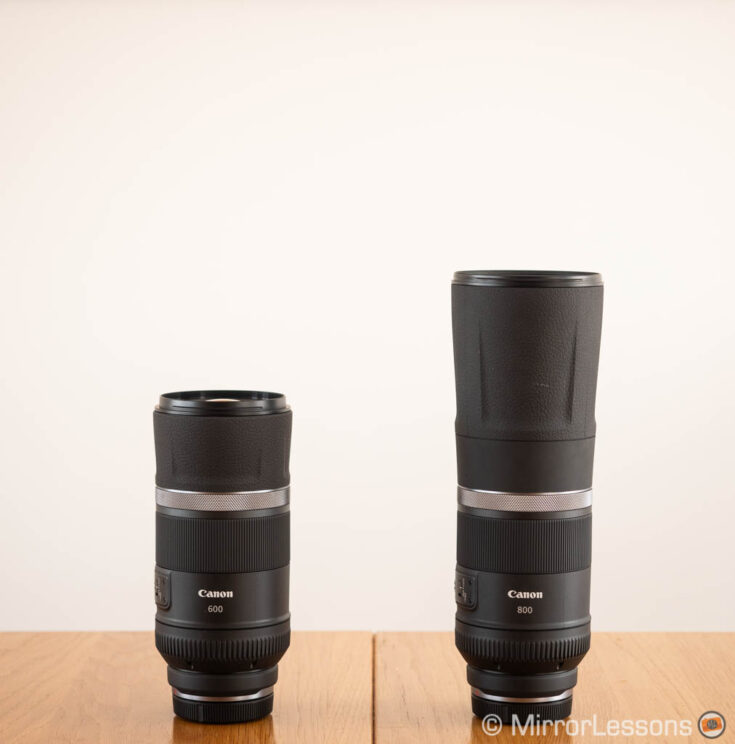
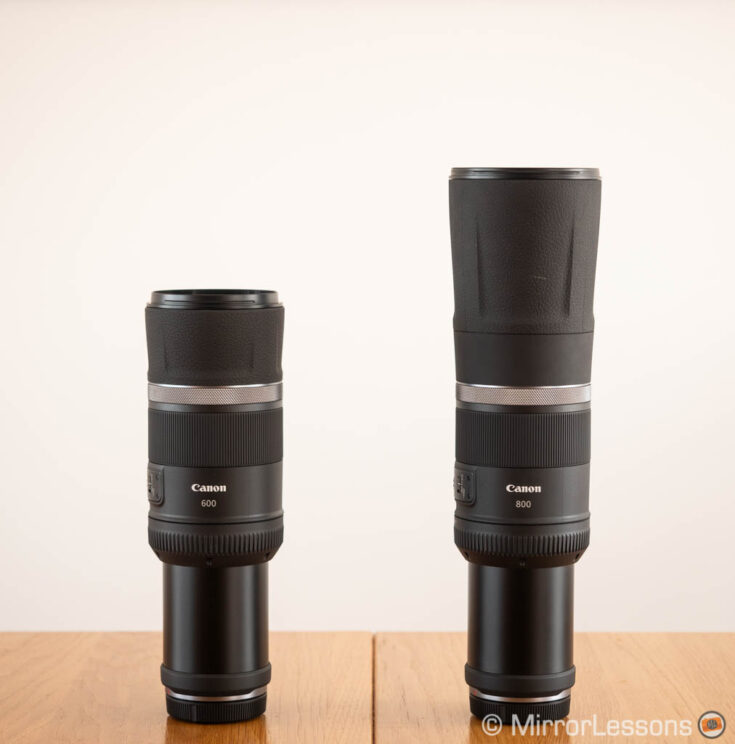
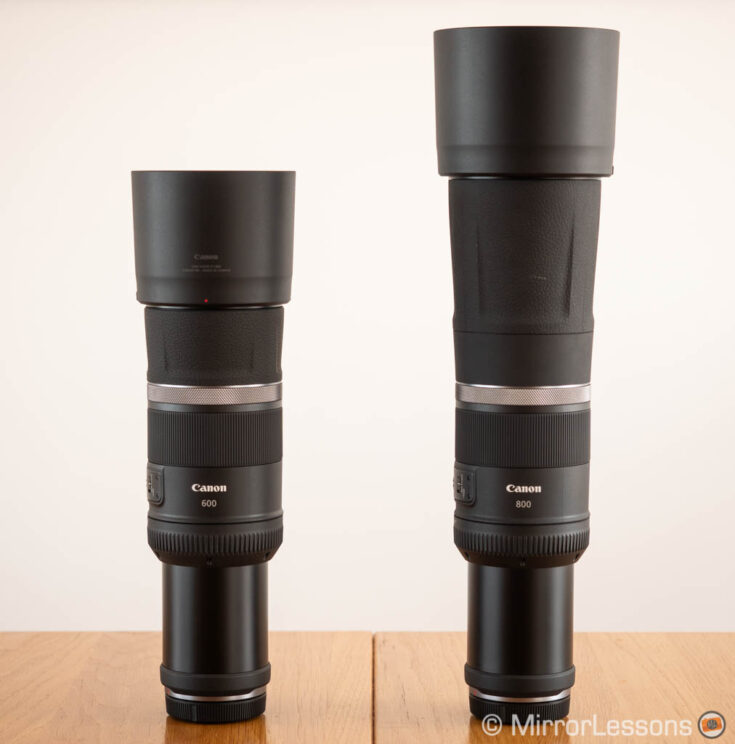
The exterior build is mostly plastic, except the mount that is made of metal. They are very lightweight but you can definitely feel that they’re not premium products (not that one would expect anything else given their affordable price).
Neither lens is weather sealed, which is a shame given that these are designed for outdoor shooting and wildlife. The lens hoods are not included in the box, you have to purchased them separately.
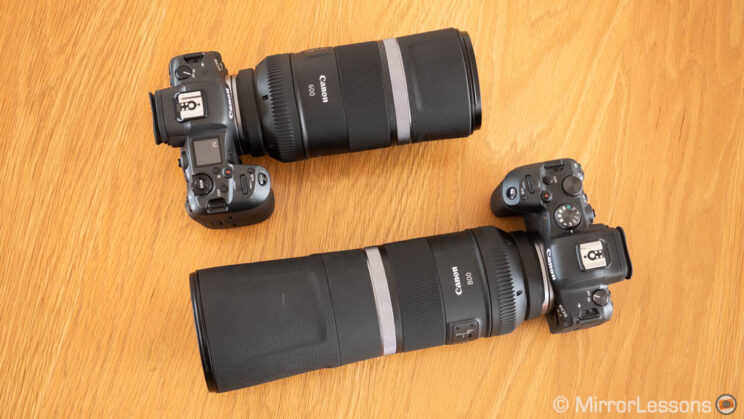
On the side of the barrel, you will find three switches to control the following:
- Focus range (Full, or 20m to infinity)
- Autofocus or Manual focus
- Stabiliser On or Off
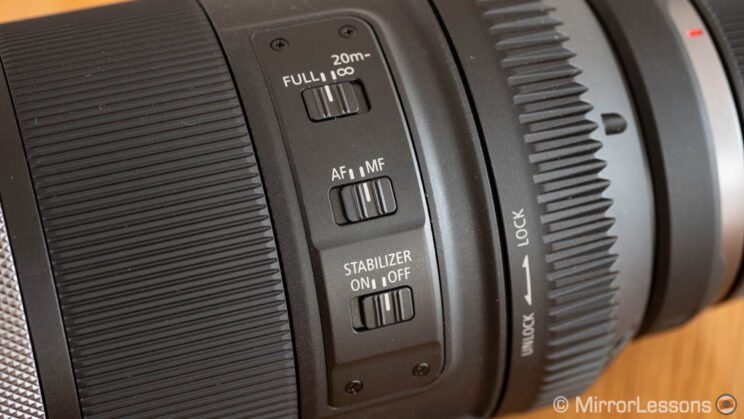
Near the mount, there is the lock/unlock ring to extend the lens. Note that until it is extended and locked, the lens won’t operate.
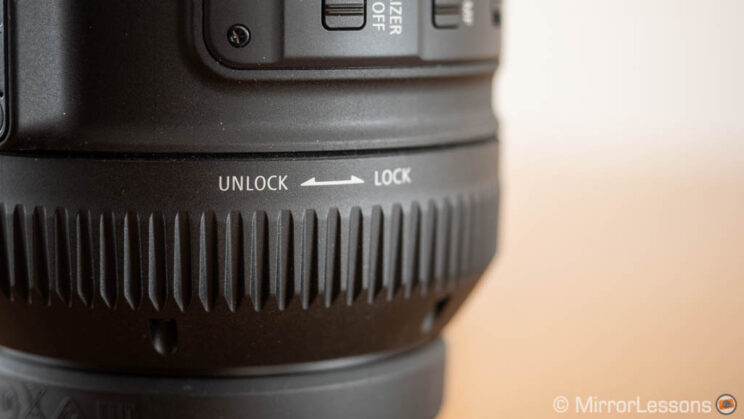
The focus ring has a rubber/stripped finish. The silver ring next to it is a control ring to which you can assign various settings such as exposure compensation, ISO, white balance and so on.
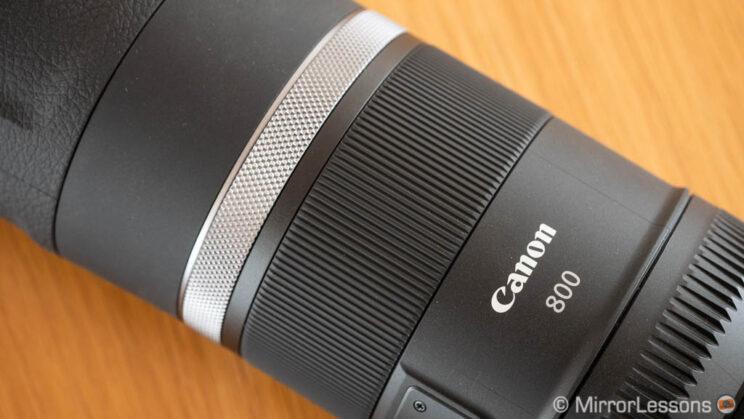
There is a 1/4” thread to mount a tripod plate or a third party tripod foot. Note that the thread is fixed, it doesn’t rotate like a tripod collar does on more expensive telephoto lenses.

Both products are compatible with the Extended RF 1.4x and RF 2x. Unfortunately they were not available to rent at the same time I got the two lenses.
Field of View
The 600mm F11 gives you an angle of view of 4.1˚ on a full frame sensor, and if that is not enough, the 800mm is even narrower at 3.05˚.
Below are a few images that show the difference in angle of view between these two lenses using real world subjects. They were taken with the 600mm, and I added the bright frame in post to show you how it would look if I’d used the 800mm instead.
Optical quality
Testing these two lenses was the easiest comparison I’ve ever done, because there is just one aperture to check. This is because they are blade-less, meaning there is no iris inside to make the aperture smaller or larger, and there is only one f-stop value: f/11.
Concerning sharpness, they perform in the same way with a very good level of detail rendering, even on a high resolution sensor like the 45MP chip of the Eos R5.
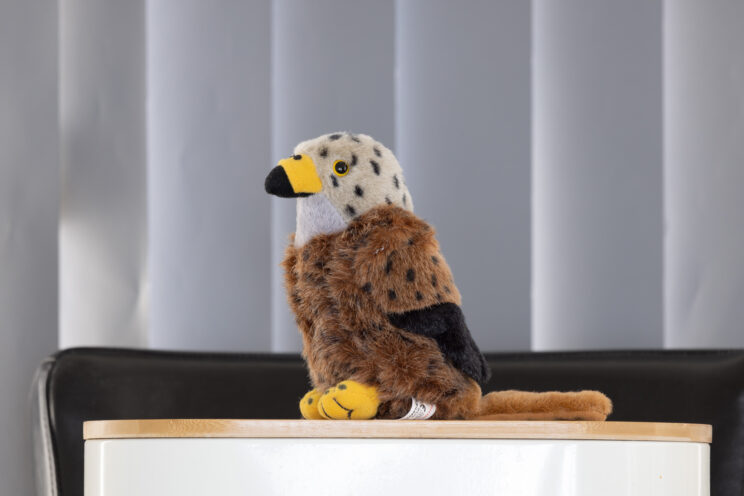
Out of curiosity, I also tested the RF 100-500mm F4.5-7.1 L to see how the quality would compare to a more expensive lens, even if it is a zoom rather than a prime. The 100-500mm is sharper at 500mm, especially when stopped down at f/11, but the difference is not huge.
The amount of background blur and subject separation will largely depend on the focus distance from the subject, and the distance of the background from the subject.
When everything is close together, the f/11-only aperture will show its limits and there will be times you wish you could open a bit more to isolate the subject better. The nature of the background and the complexity of its structure will determine how distracting the out of focus area is.
When the focus distance is shorter, or when the background is more distant, the two lenses can deliver interesting results, with acceptable-to-good subject separation.
The quality of the bokeh itself is not bad. Again, the busyness of the background (or foreground) can’t prevent you from getting a very smooth and creamy out of focus area, but overall I got results that I’m comfortable labelling as satisfying and not too distracting.
In the image below for example, there is a decent amount of shallow depth of field but there are too many elements in the foreground and background that distract you from the main subject.
In the second photo, everything is more balanced and well distributed. There is less distraction and the small bird stands out.
Here are two more examples taken with the 800mm.
I didn’t find traces of chromatic aberration and both lenses have a very good resistance to flares.
There is mild pincushion distortion and vignetting without in-camera correction or the lens profile in the photo editor software.
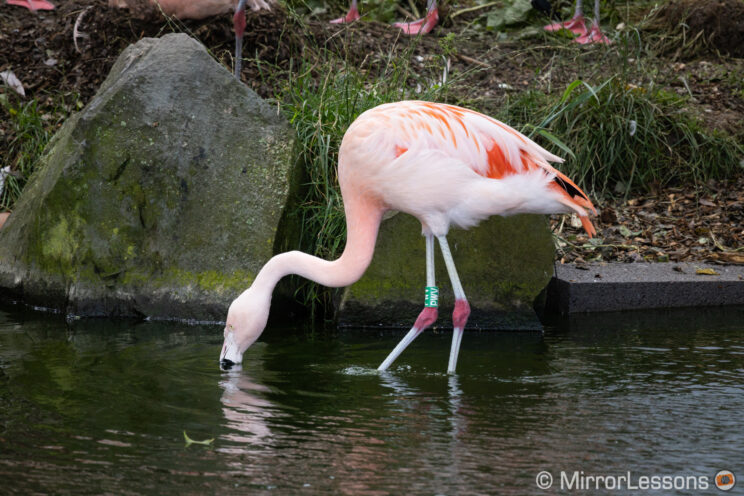
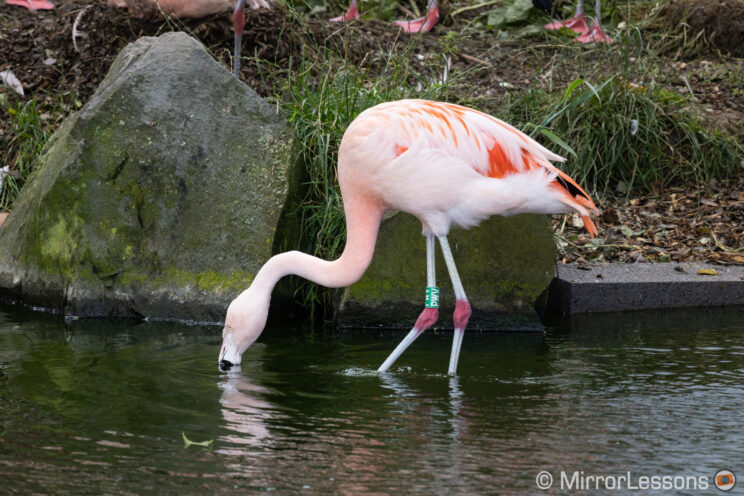
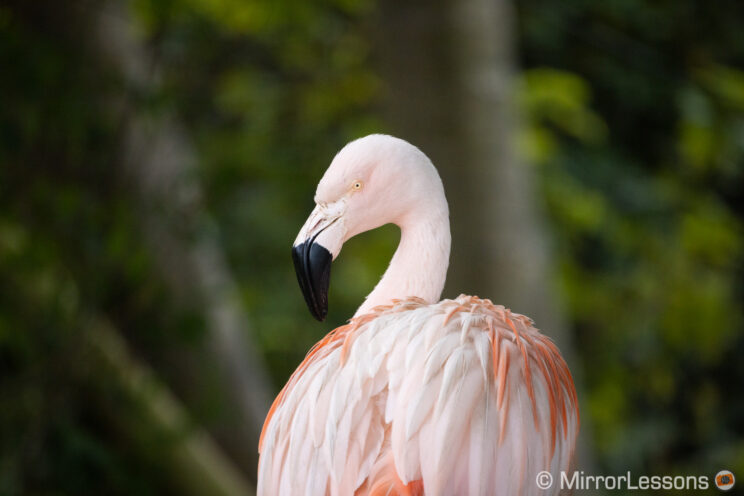
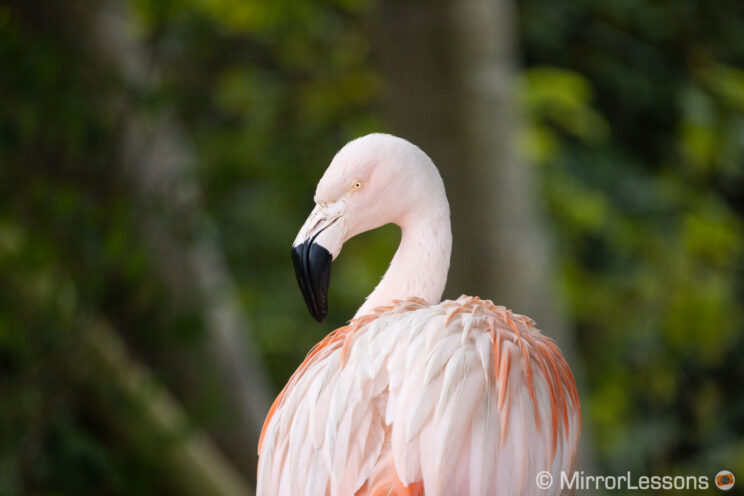
Autofocus
The 600mm and 800m feature an STM motor (Autofocus Stepped Motor) that Canon employs for the non professional-grade lenses. That said, my impressions were really good.
While testing the Canon R5 for birds in flight at my usual Red Kite feeding station, I got the same score of 90% / 99% with the 600mm, 800mm and the RF 100-500mm that has a more advanced USM motor (find out more about my BIF tests in this separate article). In other words, the autofocus of these lenses is excellent.
Occasionally, they can hunt for focus, with the classic back and forth movement of the elements inside as the lens and the camera try to lock onto the subject. It happened a few times while the bird was high in the sky but it wasn’t anything to be too concerned about.
There are only two drawbacks. The first is that the AF area you can use is much smaller, and confined to the centre of the frame. If the subject is outside of that limited area, the camera will stop focusing on it, which can lead to inaccurate results.
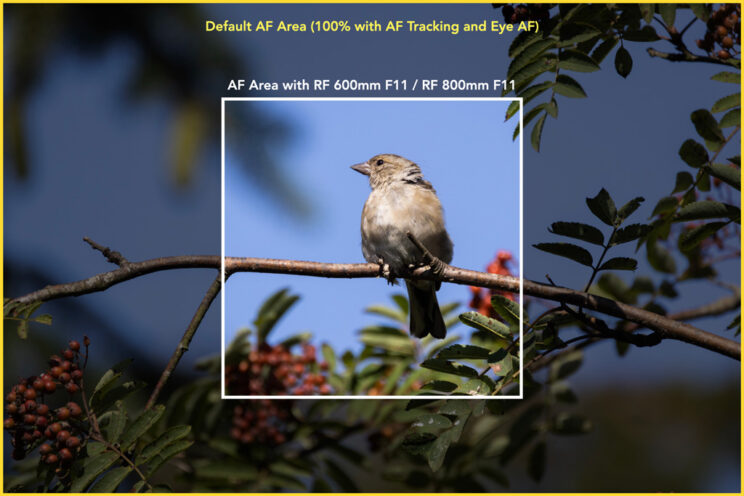
I couldn’t find confirmation, but I think the reason behind this limitation is that the AF points with the best low light sensitivity (-6.5Ev) are found at the central part of the sensor only.
What surprised me is that R5 managed to keep the red kites in focus when they were on the edge of the AF area, or momentarily outside said area. It looks like the camera uses some kind of predictive autofocus and I never ended up with completely blurry images. However if a second bird enters the AF area at the same time, then the camera will refocus on the second subject.
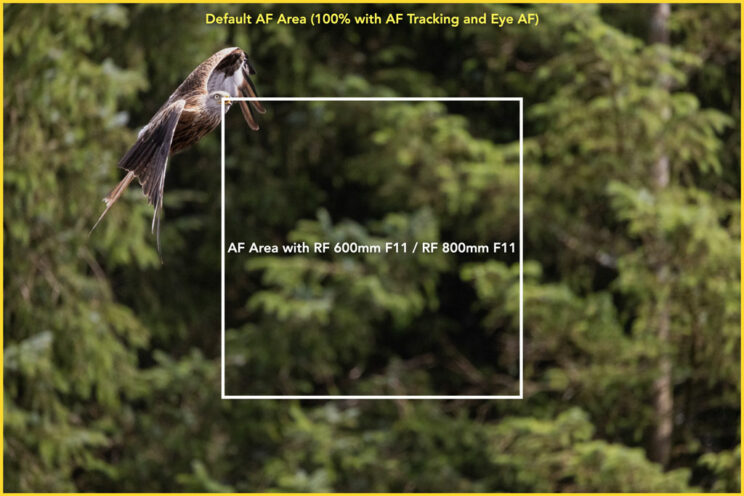
The AF area limitation can be more annoying if you’re taking a photo of two subjects side by side, because you can’t move the AF area to the left or right part of the frame. You’ll have to use the old school method of “focusing and recomposing”.
The second smaller drawback is the minimum focus distance: 4.5m for the 600mm and 6m for the 800mm (0.14x magnification for both). This makes shooting small subjects a bit tricky. I found myself having to walk back a few steps while taking pictures of small birds, and even when photographing a red panda at the local zoo, as I was too close for the lenses to focus.
Image stabilisation
The 600mm F11 has a rating of 5 stops of compensation for the optical stabilisation alone, which is 1 stop more in comparison to the 800mm F11. When paired with Canon cameras that have in-body image stabilisation, such as the R5 and R6, the rating increases to 6 stops and 5 stops respectively.
While working with the lenses in the field, I mostly used safe shutter speeds, especially during the first days when I wasn’t familiar with the gear yet.
Back home, I did some tests to see how much I could push the stabilisation and I got surprising results.
Slow speeds such as 1/10s and 1/20s hand-held are possible, although bear in mind that the keeper rate improves to about 70/80% when you shoot at 1/40s or 1/80s. The performance of the two lenses is very similar, so the 800mm is not penalised by the extra length and lower compensation rating.
Of course in real world situations with animals that are moving, you’ll need a faster shutter speed to ensure sharpness, but it means that on the occasions when a subject is very still, you can take advantage of image stabilisation to keep the ISO down.
The two lenses don’t allow you to choose different stabilisation modes (vertical only, or one designed for erratic action) like the ones you find on more expensive telephoto lenses. That said, I tested the lenses for BIF with stabilisation on, then off, and I didn’t find any problems to report.
Conclusion
I enjoyed using the RF 600mm F11 and RF 800mm F11 more than I had originally anticipated. I thought the F11 aperture and limited focus area would be too much of a trade-off, but I was wrong.
Surely if the clouds are too dark or you’re in the shade of a woodland in rainy conditions, you will struggle to compensate for that slow aperture. The converters (1.4x and 2x) will raise the challenge further because the aperture becomes f/16 and f/22 respectively.
But there are also many situations where f/11 will be enough, and you’ll be able to walk around a nature reserve or hike in the mountains with a lightweight solution, something you can’t say every day about full frame lenses for wildlife photography.
You’ll be glad to hear that the 600mm and 800mm are very sharp, the optical stabilisation is excellent and the autofocus delivers very good performance, despite the limited area available. For the price you pay, you can get a lot out of these two lenses.
My strongest criticism is the lack of weather sealing. I understand that these are non-L lenses designed for amateurs, but they’re also two lenses that photographers will use outdoors 99% of the time. It would be great to be able to walk around without worrying about light rain or a bit of dust. It is also annoying to have to buy the lens hood separately.
Canon 600mm F11 vs 800mm F11 – Which one to get?
If you’re hesitating between 600mm and 800mm, you need to consider a few things.
If you are a beginner, go with the 600mm lens. It is smaller, lens expensive and it’s a great way to take your first steps into the wildlife genre. Plus, if you’re using a camera with good sensor resolution, such as the Eos R or R5, you will have the chance to crop in post and get a bit closer to your subject when necessary.
If you’re already familiar with this type of photography, or know you’re going to spend time in places where it is difficult to get close to the subjects, you’ll want as much reach as you can possibly get, so starting at 800mm is the better choice. Don’t be put off by the larger size of the 800mm – it remains very compact and lightweight for what it offers.
Check the price of the Canon RF 600mm F11 on:
Amazon | Amazon UK | B&H Photo | eBay
Check the price of the Canon RF 800mm F11 on:
Amazon | Amazon UK | B&H Photo | eBay

